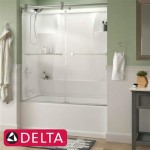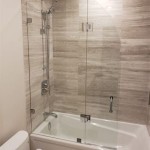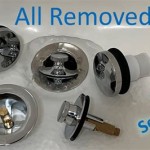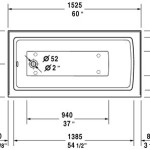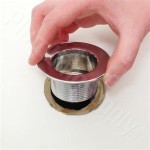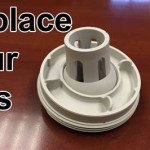How Much Does It Cost To Replace Your Bathtub With A Walk-In Shower?
Replacing a bathtub with a walk-in shower is a popular home remodeling project, offering improved accessibility, safety, and aesthetic appeal. However, understanding the associated costs is crucial for budgeting and planning purposes. The price to convert a bathtub into a walk-in shower can vary significantly based on several factors, including the size and complexity of the project, the materials selected, and the labor costs in your geographic location. This article provides a comprehensive overview of the cost considerations involved in this type of bathroom renovation.
A walk-in shower is defined as a shower that does not require stepping over a high threshold or into a tub. They often feature a low-profile entrance, sometimes even curbless, and are designed for ease of access, making them particularly beneficial for individuals with mobility issues or age-related physical limitations. The conversion typically involves removing the existing bathtub, preparing the shower area, installing the shower base and walls, plumbing adjustments, and finishing details. Each of these steps contributes to the overall cost.
Key Factors Influencing the Cost
Several key factors determine the final cost of replacing a bathtub with a walk-in shower. Understanding these factors allows homeowners to make informed decisions and manage their budget effectively.
Size and Configuration of the Space: The dimensions of the existing bathtub area and the desired size of the walk-in shower significantly impact the cost. A larger shower will require more materials, such as tile, shower base, and glass enclosure, thereby increasing the overall expense. If the existing plumbing needs to be moved to accommodate a different shower configuration, this will also add to the price. The complexity of the existing bathroom layout can also influence labor costs.
Materials Used: The choice of materials greatly affects the project's cost. Options range from basic acrylic or fiberglass shower bases and surrounds to high-end tile, custom shower pans, and glass enclosures. Tile, for example, can vary drastically in price depending on the type of material (ceramic, porcelain, natural stone), the size of the tile, and the complexity of the installation pattern. Similarly, shower doors can range from simple shower curtains to framed glass doors to frameless glass enclosures, each with its own price point.
Plumbing and Electrical Work: Replacing a bathtub with a walk-in shower may require adjustments to existing plumbing. This could involve moving the showerhead, adjusting water lines, or installing new drainpipes. If you're adding features like a body spray system or a rain shower head, more extensive plumbing work will be necessary. Electrical work might be required if you're adding new lighting, a ventilation fan, or heated flooring. Hiring licensed plumbers and electricians is essential for ensuring that these aspects of the project are handled safely and according to code.
Labor Costs: Labor costs are a significant portion of the overall expense. These costs cover the services of contractors, plumbers, electricians, and tile installers. Labor rates vary depending on the region, the contractor's experience, and the complexity of the project. It's advisable to obtain multiple quotes from different contractors to compare prices and ensure that you're receiving a fair estimate.
Accessibility Features: If the primary reason for converting to a walk-in shower is improved accessibility, additional features may be required. These could include grab bars, a built-in shower seat, or a handheld showerhead. These features add to the cost of the project but greatly enhance the shower's functionality and safety for individuals with mobility limitations.
Demolition and Disposal: Removing the existing bathtub can be a labor-intensive task, particularly if it's a large or heavy tub. The cost of demolition and disposal of the old tub and associated materials must be factored into the overall budget. Some contractors include this cost in their initial estimate, while others may charge it separately.
Average Cost Breakdown
While the total cost can vary widely, providing a general cost breakdown can offer a better understanding of the potential expenses involved. The following provides an estimated range of costs for the various components of the project, keeping in mind that actual costs may vary depending on the factors outlined above.
Demolition and Disposal: $200 - $500. This includes removing the existing bathtub, tile, and any associated fixtures, as well as disposing of the debris.
Shower Base: $300 - $1,500. The cost of the shower base depends on the material (acrylic, fiberglass, custom-made) and the size. A custom-tiled shower base will generally involve higher labor costs compared to a pre-fabricated base.
Shower Walls: $500 - $5,000 or more. This is a broad range, as the cost of shower walls is heavily influenced by the material. Acrylic or fiberglass surrounds are the most affordable options, while tile can range from inexpensive ceramic to high-end natural stone. Installation costs for tile also depend on the tile size and complexity of the design.
Shower Door or Enclosure: $300 - $3,000 or more. A simple shower curtain is the least expensive option. Framed glass doors are generally more affordable than frameless glass enclosures, which can be quite costly due to the thicker glass and custom installation required.
Plumbing: $400 - $1,500. This covers the cost of adjusting water lines, drainpipes, and installing new shower fixtures. If significant plumbing work is required, the cost could be higher.
Electrical: $200 - $800. This covers the cost of adding new lighting, ventilation, or heated flooring. The cost will depend on the complexity of the electrical work and the number of new fixtures installed.
Accessibility Features: $100 - $500 or more. Grab bars typically cost between $50 and $200 each, depending on the style and material. A built-in shower seat can range from $100 to $500 or more, depending on the size and construction.
Labor: $1,000 - $5,000 or more. The cost of labor is a significant factor and can vary widely depending on the location and the contractor's rates. A complete bathroom remodel involving significant plumbing and electrical work will naturally incur higher labor costs.
Therefore, the total cost to replace a bathtub with a walk-in shower can range from approximately $3,000 to $15,000 or more. Projects with basic materials and minimal plumbing adjustments can be completed for the lower end of the range, while more elaborate projects with high-end materials and extensive modifications can easily exceed the higher end.
Strategies for Managing Costs
While the cost of converting a bathtub to a walk-in shower can be significant, there are several strategies homeowners can employ to manage costs and stay within their budget.
Obtain Multiple Quotes: It is crucial to obtain quotes from at least three different contractors before making a decision. This allows you to compare prices and services and ensure that you're receiving a fair estimate. Carefully review each quote to understand what is included and what is excluded. Ask contractors to provide detailed breakdowns of labor and material costs.
Choose Cost-Effective Materials: Selecting less expensive materials can significantly reduce the overall cost. For example, opting for acrylic or fiberglass shower surrounds instead of high-end tile can save a considerable amount of money. Similarly, choosing a framed glass shower door instead of a frameless enclosure can also lower the cost. Explore different material options and compare prices to find the best balance between cost and aesthetics.
Consider Doing Some of the Work Yourself: If you have the necessary skills and experience, you can save money by handling some of the simpler tasks yourself. For example, you might be able to handle the demolition of the existing bathtub and the disposal of materials. However, it's essential to leave more complex tasks, such as plumbing and electrical work, to qualified professionals to ensure that the work is done safely and correctly.
Plan Ahead: Careful planning is essential for keeping costs under control. Develop a detailed plan that outlines all aspects of the project, including the design, materials, and timeline. Having a well-defined plan can help prevent unexpected issues and cost overruns. It is advisable to consult with a professional designer or contractor during the planning phase to get expert advice and identify potential challenges.
Look for Sales and Discounts: Many retailers offer sales and discounts on bathroom remodeling materials. Take advantage of these opportunities to save money on items such as tile, shower bases, and shower doors. Consider purchasing materials during off-season periods when prices may be lower. Check online retailers and local home improvement stores for special deals.
Prioritize Essential Features: Determine which features are essential for your needs and focus on those. If accessibility is a key concern, prioritize features like grab bars and a low-threshold shower base. If aesthetics are important, allocate more of your budget to high-quality tile and fixtures. Focusing on the most important features allows you to allocate your budget effectively and avoid unnecessary expenses.
Be Prepared for Unexpected Costs: It is always wise to set aside a contingency fund to cover unexpected costs. During any home remodeling project, unforeseen issues can arise, such as hidden plumbing problems or structural damage. Having a contingency fund can help you address these issues without derailing your budget.
Ultimately, the cost of replacing a bathtub with a walk-in shower depends on a multitude of factors. Careful planning, diligent research, and thoughtful budgeting are essential for ensuring a successful and cost-effective renovation project. By understanding the various cost considerations and implementing strategies for managing expenses, homeowners can create a beautiful and functional walk-in shower that meets their needs and preferences without overspending.

How Much Does A Tub To Shower Conversion Cost

How Much Does A Tub To Shower Conversion Cost 2025 Angi

Walk In Tub Shower Combo Cost By Size Features And Other Options

2025 Tub To Shower Conversion Cost Walk In Stall

How Much Does A Shower Remodel Cost In 2024 Planner 5d

Mom Knows Best The Cost Of Converting A Bathtub To Walk In Shower

Bathtub Replacement Costs In 2025 By Tub Type Size

How To Convert A Tub Walk In Shower Budget Dumpster

Master Bathroom Renovation Converting A Bathtub Into Walk In Shower Our Handcrafted Life

2025 Walk In Shower Cost Guide By Size Type

